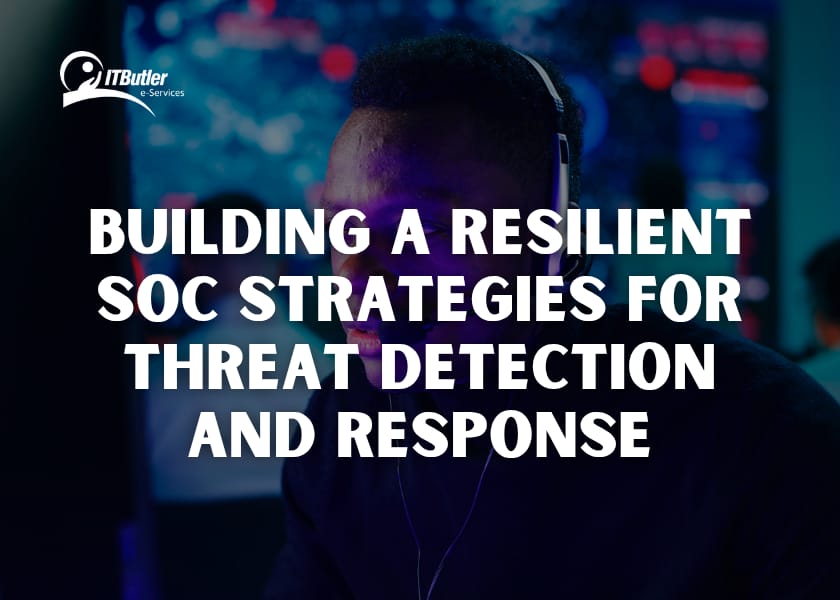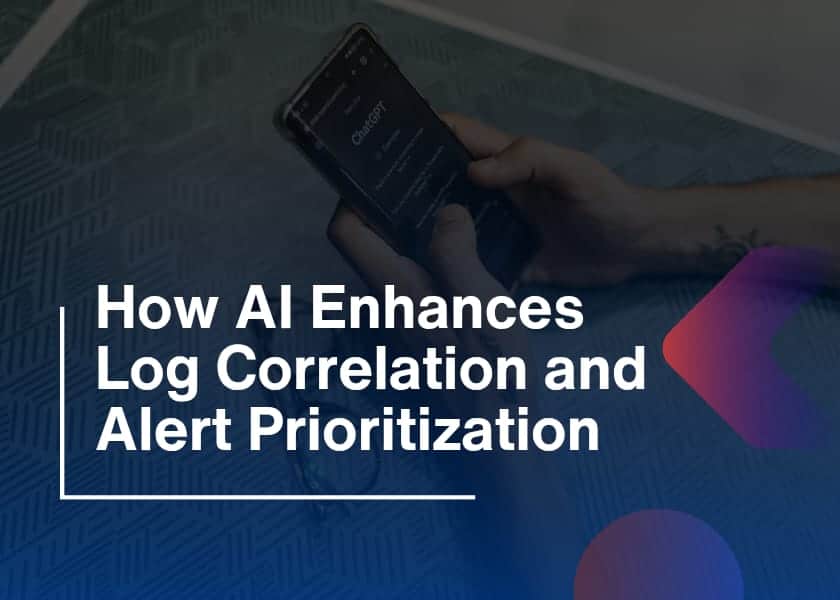Imagine you are taking your cup of coffee, and a message pops up. Your Security Operations Center (SOC) has detected a potential breach. Panic or precision? Well, this will depend on the strength that you have invested in your SOC because a good SOC is about readiness, proactivity, identification, and instant response. But how can you build resilient SOC strategies? More importantly, how can it avoid its collapse in the face of pressure?
In this guide, we will discuss the resilient SOC strategies, threat detection in SOC, and threat response approaches for SOC. However, it is critically important, no matter whether you are facing the challenge of managing your in-house team or hiring a good MSSP, to apply the strategies.
Understanding SOC Resilience Strategies
First of all, it will be essential to define what SOC resilience means for this paper. As has been mentioned, a strong SOC is capable of defending itself, returning to the normal state shortly after an attack, and continuing with business as usual.
However, let’s assume it’s like a boxer. A weak fighter takes one hit and falls. But a resilient one expects a punch, avoids it, and retaliates immediately. That is exactly what a SOC has to do: to identify threats in advance and act immediately.
Key Aspects of SOC Resilience:
- Threat anticipation: Volunteered geographical information for risk assessment before the onset of an attack.
- Rapid detection: Moreover, an ability to identify them at the earliest stage possible before they blow up.
- Efficient response: Mitigating damage in real-time.
- Continuous improvement: How to use experience to increase protection measures.
Now that we know the definition of what it means to be resilient, it is time to construct it!
Threat Detection Strategies
Cyber threats don’t walk in with a neon sign that says, “I’m here to cause chaos.”But they invade our systems quietly. This is why the SOC threat detection system is the safest. Here is how you can stand a chance of first identifying the criminals in the act before they destroy or steal whatever you are protecting.
A. Implement AI-Powered Threat Detection
Attackers are smart. A stronger SOC configuration becomes necessary because attackers prove their superior intelligence. Moreover, artificial intelligence (AI) and machine learning (ML) systems work faster than human analysts to process data for anomaly detection, which flags suspicious network activities effectively.
Furthermore, AI systems currently warn security teams about unusual login attempts originating from different locations coupled with rare network spikes and unauthorized data access incidents through immediate alerts.
B. Use Threat Intelligence Feeds
The threat intelligence feed industry delivers comparable value to the way weather reports offer predictions about upcoming storm patterns. They provide real-time information on new malware, attack techniques, and vulnerabilities. So, your SOC becomes more effective when you connect threat intelligence feeds because you gain notice of attacks.
Moreover, SOC can prevent ransomware attacks by actively updating defense systems when new ransomware strains emerge in public news.
C. Implement Behavioral Analysis
The security technologies currently in use concentrate on known suspicious activities, although numerous unknown threats could remain hidden from them. So, behavioral analysis detects unusual patterns as well as system behaviors. Thus enabling it to identify threats when no known patterns exist.
Hence, suddenly increased activity of sensitive data downloads occurring during late hours serves as a suspicious behavior flag.
D. Deploy Endpoint Detection and Response (EDR)
Laptops and mobile devices, along with server functions, are weak points in most networks because the monitoring capabilities of EDR solutions detect suspicious activities while containing spreading attacks at endpoints.
Therefore, the detection of malware on a workstation leads EDR to disconnect the device from the network, thus blocking attack propagation.

Threat Response Strategies
Protecting systems against cyber dangers stands as only the initial half of an overall battle. But what’s the real challenge? The critical requirement is to stop the attack in time to avoid damage. Therefore, building resilient SOC strategies is important for threat response. Here are the steps you can follow:
A. Automate Incident Response
The time for coffee breaks provides no refuge from cyberattacks. That is why your current manual procedures require too much time to complete their functions. The quick implementation of automated blocking mechanisms against malicious IP addresses, along with compromised system isolation tools, enables you to end attacks in seconds.
Moreover, your SOC utilizes a system to react to ransomware activity, which immediately isolates files under quarantine for security analysts to receive notifications.
B. Create a book for Common Threats
When a SOC demonstrates strength, it implements established plans rather than making spontaneous decisions. Therefore, cyber defense response to different security incidents is simplified via virtual playbooks. So, it provides clear instructions for rapid, consistent actions.
A phishing attack should follow the sequence of activities, which includes:
- Identifying affected users.
- Blocking malicious email domains.
- Scanning for further infections.
- Training employees to recognize similar scams in the future.
C. Implement SOAR (Security Orchestration, Automation, and Response)
SOAR (Security Orchestration Automation Response) must be deployed as part of the implementation process. Because SOAR solutions unify threat intelligence with automated responses together with case management features that enable SOC teams to manage incidents effectively.
Moreover, through SOAR tools, organizations automate the process of incident response.
D. Test Your Incident Response Regularly
A good response plan is only useful if it’s ever tested. Therefore, regular simulations such as red team attacks, tabletop exercises, and penetration tests can keep your SOC at the ready at all times.
For Example: Conduct a simulated ransomware attack that finds weaknesses in your response plan. So you’ll correct them before it happens for real.
Building a SOC That Can Withstand Any Attack
Resilient SOC strategies are not just about nice tools and techniques; it’s about people, processes, and continuous learning. So here is how to make sure your SOC stays strong:
1. Train Your Team Like Cyber Ninjas
A good team is the best defense. Continuous training, cybersecurity certifications, and hands-on exercises keep analysts sharp.
Example: Running monthly phishing simulations helps employees recognize and avoid scams before they fall victim.
2. Monitoring 24/7
Cybercriminals don’t have a concept of business hours. So, A real SOC is a 24/7 operation that will detect threats in real-time and respond accordingly.
Example: An attack occurs at 3 AM, and automated systems generate alerts; an on-call analyst immediately looks into it.
3. MSSP for Extra Support
Not all organizations can afford an in-house SOC. Therefore, an MSSP provides security monitoring and response with all the expertise but none of the price.
Example: A small business partners with an MSSP for SOC threat detection, gaining 24/7 protection without hiring an internal team.
Conclusion
Building resilient SOC strategies is like training for a never-ending fight. Cyber threats keep evolving, but with the right SOC threat detection and SOC threat response strategies, you can stay ahead.
But what’s the key? Automate smartly, train relentlessly, and monitor continuously. Whether you’re managing your security team or working with an MSSP, resilience is your best weapon.





